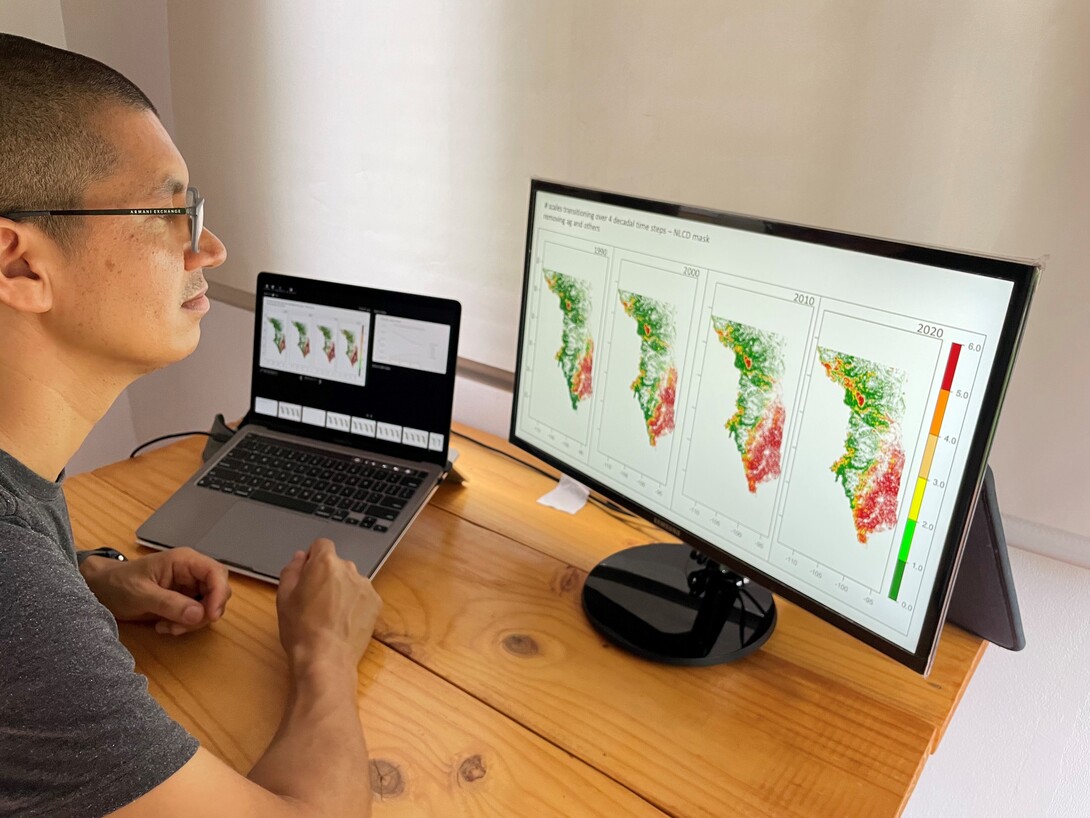
Lincoln, Neb. —The current way Great Plains lands are managed is a "mismatch" to the red cedar problem, one Nebraska researcher said recently.
“Over the past few weeks, we've really found some interesting revelations coming out about how we manage the lands versus how the encroachment process is occurring on the landscape, and there's a complete mismatch,” said Rheinhardt Scholtz, a postdoctoral student working on the Nebraska-Montana EPSCoR project said. “We’re managing local areas for encroachment, but encroachment really seems to be happening at broad scales, which means that things that are farther apart seem to be having a larger impact than things that are closer together.”
The spread of red cedars across the Great Plains threatens the livelihood of everyone, especially ranchers as grazing lands become woodlands, he said. Trees also fuel dangerous wildfires than can demolish homes and take lives, he said.
The Nebraska-Montana EPSCoR project, now in its fourth and final year, has been examining how land shifts from desirable grassland to undesirable trees, shrubs or cheatgrass in the western United States and how this change can be counteracted. Scholtz has been analyzing data from fellow Nebraska scientists Daniel Uden and Dirac Twidwell. The postdoc and professors have been using the Rangeland Analysis Platform in a new science called “resilience informatics.”
Scholtz said the research is needed to better understand encroachment and ways to manage land where it occurs.
“All our previous research was showing that we are actually spending all of this money and resources managing this problem, and it's not working,” he said. “So, maybe now that we can understand a little bit of the mechanism, how can we change some of the techniques that we're doing to better manage what we see?”
One of the most promising treatments of the spread of red cedars has been prescribed burns, but the trees are spreading on a much larger scale than a plot of land, Scholtz said. Complicating this, most of the Great Plains grasslands are privately owned, with landowners deciding how to manage the land.
This method of management is different from that of Scholtz’s home country, South Africa, where he studied semi-arid savannas. There, much land is part of national parks and governed by park management plans, he said.
“What was interesting about looking at the two regions was the Great Plains doesn't generally have too many national parks or it doesn't have a unified system of conserving landscapes. It's all privately owned, where people do what they decide to do, what they feel like doing, and that changes with time,” he said. “How do you manage natural resources, a system like that where a landowner has 100-percent say in what happens on the landscape?”
With his move to the Great Plains in 2015, he quickly saw the need to engage landowners and communicate scientific findings to this broader community.
“If we don't get buy-in from landowners, we will struggle because we don't have these large areas of federal land that we can just try and convince the federal folks, ‘This is how we ought to manage this land,’” he said.
Even if the federal government could choose the management strategies, Scholtz said he is not sure how quickly, or even if, the problem of encroachment could be resolved.
“We haven't really gotten in the grips of how to stop it or to how slow it down or how to reverse it,” he said. “We might be at this point now where reversing it is going to be really tough, but we could defend what we have, the areas that haven't really been encroached yet.”
He and the other 15 scientists on the EPSCoR project have been focusing more on the Sandhills as one of the largest remaining intact prairies left in the world. Through resilience informatics, they can see red cedars spreading from east to the west in Nebraska. Scholtz said they want to stop the trees from reaching the Sandhills.
“That's sort of where I think our resources ought to go to next as opposed to reversing what's already a problem,” he said. “How do we keep what's good, good and not lose what we might lose if we just carry on business as usual? Because business as usual means we’re going to be the Great Forest.”
Working alongside the biophysical scientists on the EPSCoR project are social scientists, and Scholtz said they have been key to gaining understanding of the mindset of landowners and others making decisions on Great Plains land.
The social scientists have extensively surveyed ranchers and conservation professionals. Scholtz said the EPSCoR scientists plan to use results of these surveys not only to understand the current decisions being made but also to determine the best way to communicate scientific findings to the public.
For academia, Scholtz said he expects several papers to be published on this project.
“Some of this research certainly extends beyond what we're doing for EPSCoR because it’s going to shed some serious light on the encroachment process and the Great Plains, which I don't think anyone's ever done that in any part of the world to be able to understand how encroachment happens,” he said.







